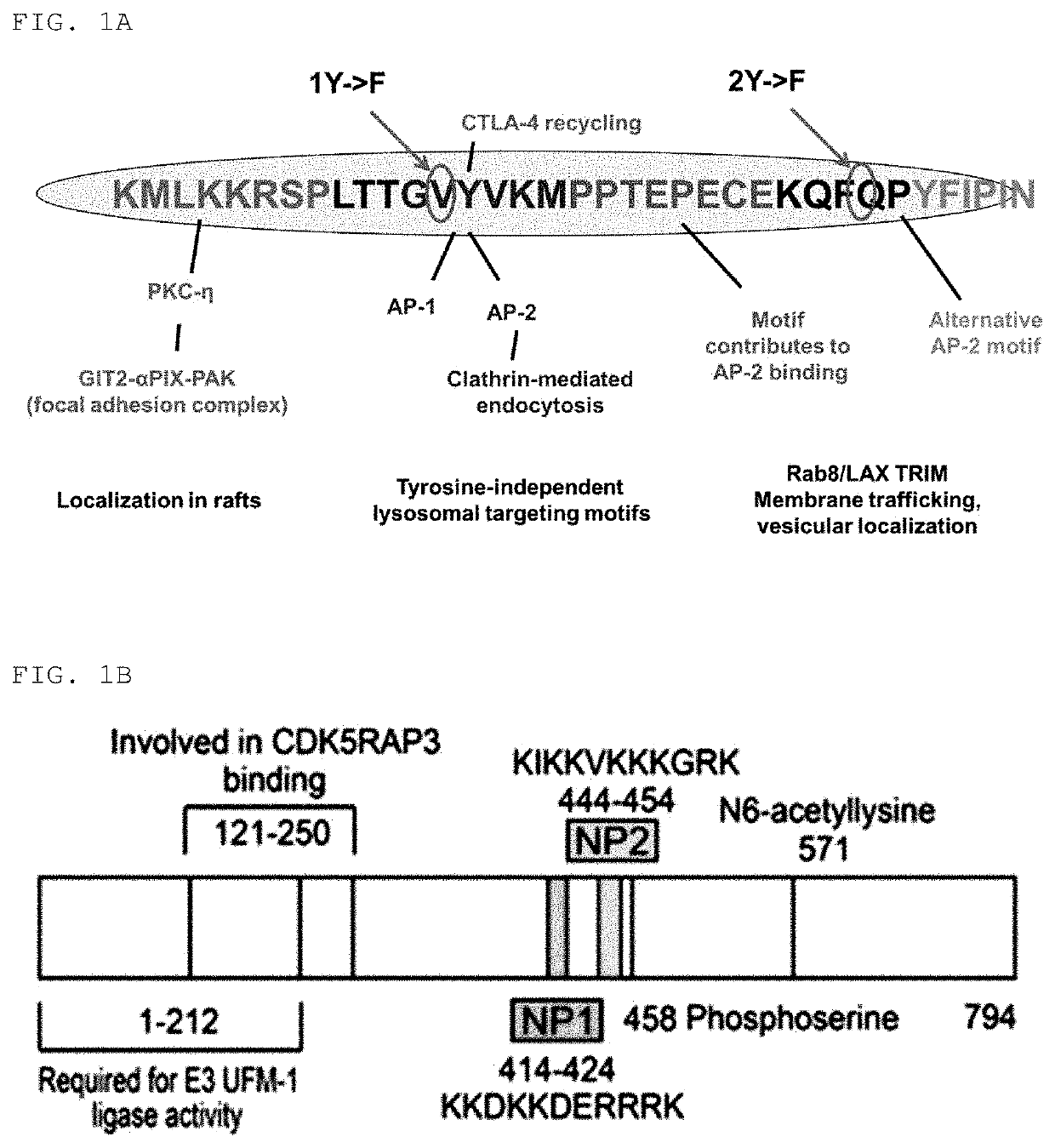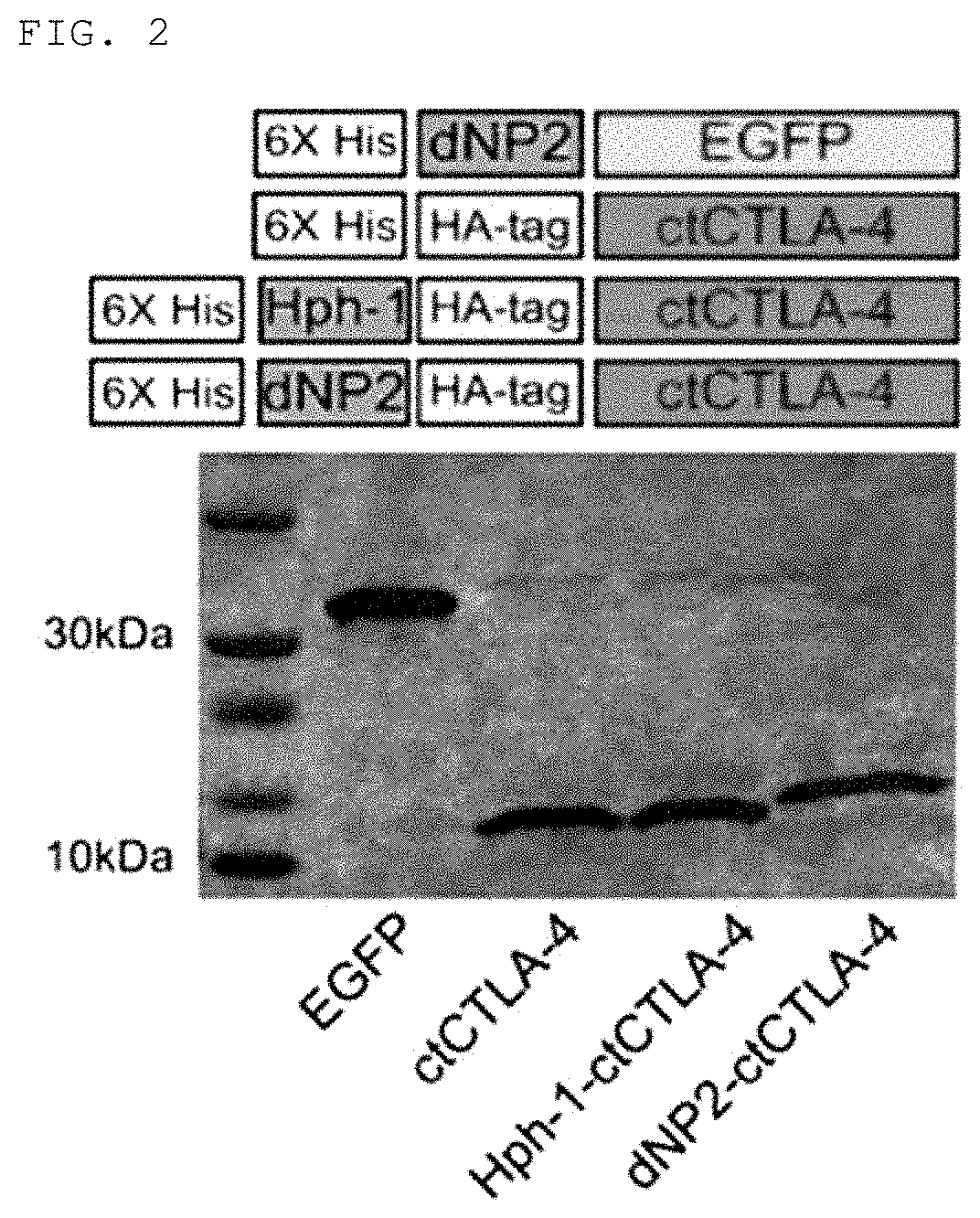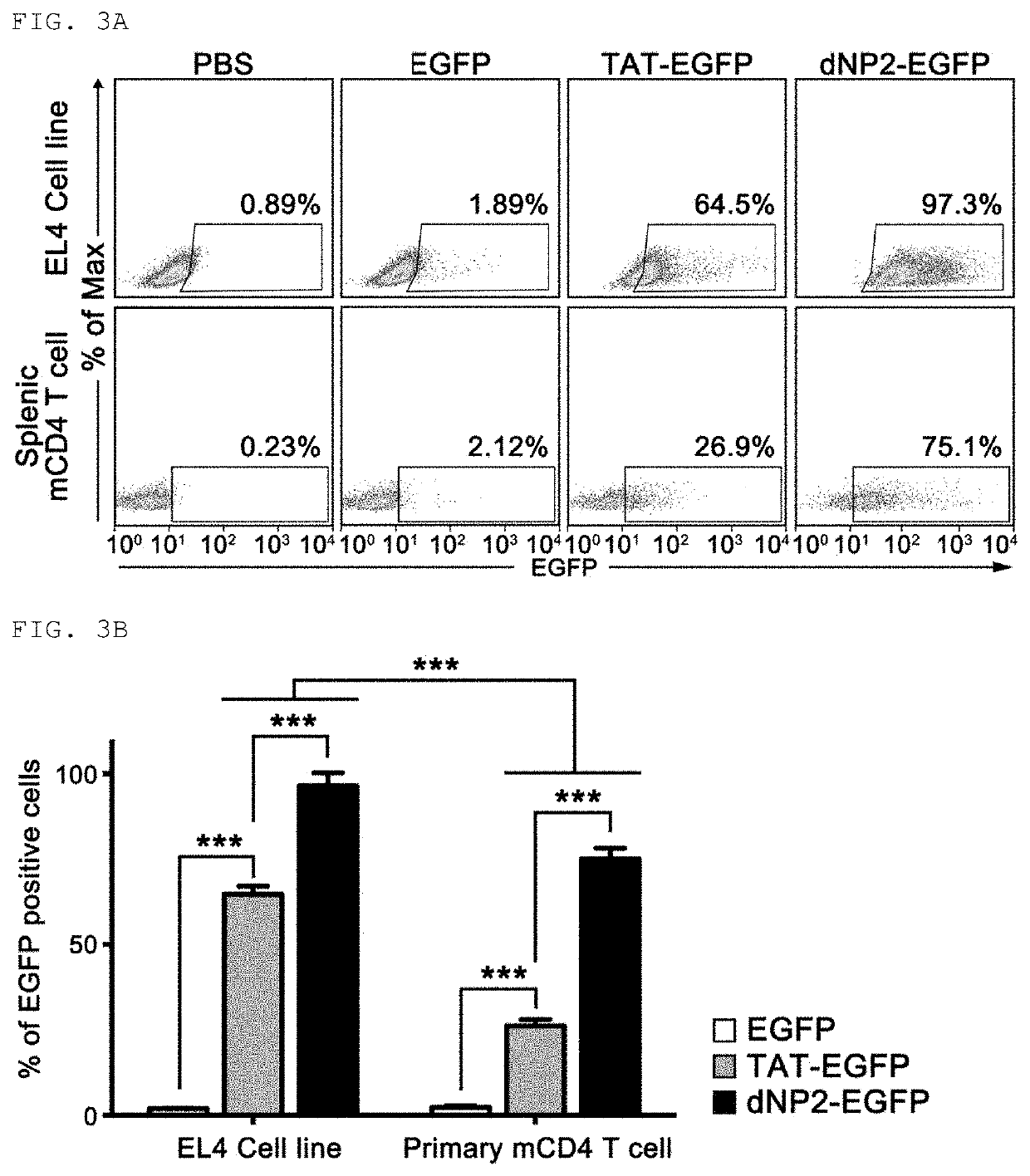Pharmaceutical composition for preventing and treating transplant rejection
a technology of pharmaceutical compositions and peptides, applied in the field of peptides, can solve the problems of immunological graft rejection, microvascular injury, tissue ischemia and destruction of graft tissues, and significant side effects, and achieve the effects of reducing skin graft damage, reducing side effects, and successfully controlling in vivo human
- Summary
- Abstract
- Description
- Claims
- Application Information
AI Technical Summary
Benefits of technology
Problems solved by technology
Method used
Image
Examples
production example 1
Synthesis / Separate Purification of Peptides, Fragments thereof and Fusion Peptides
[0152]Peptides having amino acid sequences represented by Sequence ID Nos. 1 to 4 and 8 to 10 were synthesized.
[0153]At this time, the peptide having an amino acid sequence represented by Sequence ID No. 1 (hereinafter also referred to as “ctCTLA-4”), the peptide fragment having an amino acid sequence represented by Sequence ID No. 2 (hereinafter also referred to as “ctCTLA-4-fm1”), the peptide fragment having an amino acid sequence represented by Sequence ID No. 3 (hereinafter also referred to as “ctCTLA-4-fm2”), the fusion peptide having an amino acid sequence represented by Sequence ID No. 4 (hereinafter also referred to as “ctCTLA-4-fm3”), the cell-penetrating peptide having an amino acid sequence represented by Sequence ID No. (hereinafter also referred to as “dNP2”), the cell-penetrating peptide having an amino acid sequence represented by Sequence ID No. 9 (hereinafter also referred to as “Hph-1...
production example 2
Synthesis / Separate Purification of Peptide Variants
[0155]Peptides having amino acid sequences represented by Sequence ID Nos. 5 to 7 were synthesized. Peptide variants having Sequence ID Nos. 5 to 7 were obtained by substituting, by F, Y amino acid residues of “1Y” and “2Y” shown in FIG. 1A in the Sequence ID No. 1.
[0156]Specifically, the peptide variant having an amino acid sequence represented by Sequence ID No. 5 was obtained by substituting, by F, the Y amino acid residue of the part represented by “1Y”, which is represented by “1YF”, the peptide variant having an amino acid sequence represented by Sequence ID No. 6 was obtained by substituting, by F, the Y amino acid residue of the part represented by “2Y”, which is represented by “2YF”, and the peptide variant having an amino acid sequence represented by Sequence ID No. 7 was obtained by substituting, by F, the Y amino acid residues of both “1Y” and “2Y” parts, which is represented by “DYF”.
[0157]Peptide variants were synthesi...
production example 3
Production of Fusion Products (dNP2-ctCTLA-4, Hph-1-ctCTLA-4, TAT-ctCTLA-4)
[0158]In order to fuse the peptide having an amino acid sequence represented by Sequence ID No. 1 produced in Production Example 1 with the cell-penetrating peptide, a primer for linking the cell-penetrating peptide represented by Sequence ID No. 8, Sequence ID No. 9, or Sequence ID No. 10 to the N-end of ctCTLA-4 peptide was produced to produce dNP2-ctCTLA-4, Hph-1-ctCTLA-4 or TAT-ctCTLA-4 genes through PCR reaction, these genes were injected into vectors (pRSET-b) to express proteins in Escherichia strains, the proteins were purified, and testing to confirm transfer efficiency of the proteins into cells was conducted. The detailed procedure will be described below.
[0159]1) Production of Encoding Genes
[0160]The DNA base sequence for encoding the cell-penetrating peptide having an amino acid sequence represented by Sequence ID No. 8, Sequence ID No. 9 or Sequence ID No. 10 was added to the DNA base sequence f...
PUM
| Property | Measurement | Unit |
|---|---|---|
| size | aaaaa | aaaaa |
| size | aaaaa | aaaaa |
| temperatures | aaaaa | aaaaa |
Abstract
Description
Claims
Application Information
 Login to View More
Login to View More - R&D
- Intellectual Property
- Life Sciences
- Materials
- Tech Scout
- Unparalleled Data Quality
- Higher Quality Content
- 60% Fewer Hallucinations
Browse by: Latest US Patents, China's latest patents, Technical Efficacy Thesaurus, Application Domain, Technology Topic, Popular Technical Reports.
© 2025 PatSnap. All rights reserved.Legal|Privacy policy|Modern Slavery Act Transparency Statement|Sitemap|About US| Contact US: help@patsnap.com



